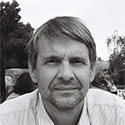The YHRD Database: How It Works and How to Use It in Casework
- How to use the Y-HRD to facilitate statistical analyses for a range of casework applications and interpretation purposes (e.g., frequency estimation, kinship and mixture analysis and ancestry prediction
Summary
Today, Y chromosome typing is used to assist forensic investigations in a broad range of casework, either for rapid sexing of traces, for the identification and profiling of masked male DNA component(s) in mixtures with an excess of female DNA, for tracing male lineages in relationship testing or for analyzing the ancestry of unidentified corpses or unknown trace donors. Like any forensic DNA analysis, judging the significance of a match between the trace and a reference person depends upon the population frequency of the DNA profile. Y chromosomes are highly geographically structured and there is the further complication that all members of a patrilineage are expected to share Y haplotypes. The forensic community has been proactive in establishing large quality-assured and publicly accessible databases of Y-haplotypes to address these issues. The Y Chromosome Haplotype Reference Database (YHRD) now includes 135 national databases which were populated in the past 20 years. The YHRD project started in 1999 with a collection of 3,825 haplotypes typed in 48 populations for up to 13 Y-STRs. Currently, the 60th edition of the YHRD is online with 269,383 profiles from 1,262 populations typed for up to 29 Y-STRs and a large number of SNPs. These data facilitate statistical analyses for a range of casework applications and interpretation purposes (e.g. frequency estimation, kinship and mixture analysis, ancestry prediction). All incoming data are validated first by the submitter using YHRD online tools and then by the curators before being uploaded and accepted for publication. To calculate the Y-STR profile frequency constant and variable estimators can be used. Constant estimators (counts in a database accompanied by a confidence interval) are bound from below by the database size and are therefore often overly conservative. In contrast, variable estimators are independent of the database size but not from its allelic composition. The “Discrete Laplace method” which is implemented in the Y Chromosome Haplotype Reference Database (YHRD) is a model-based extrapolation method which makes use of an in-depth analysis of Y-STR profiles in more than thousand worldwide population samples. It can be used to estimate haplotype frequencies with a better approximation than the counting method. Moreover, the YHRD is a useful resource to infer the ancestry of an unknown male person due to the availability of a consensus phylogenetic tree and geographic and ethno-linguistic information assigned to each profile. Y-based ancestry prediction and familial searching can therefore provide important investigative leads in crime cases without suspect.
Speaker

Lutz Roewer, PhD
Head and Associate Professor, Department of Forensic Genetics
Institute of Legal Medicine and Forensic Sciences
Charité University Hospital, Berlin, Germany
Lutz Roewer studied biochemistry at the University of Leipzig (Germany) and received his Ph.D. degree for molecular biology at the Humboldt-University Berlin (Germany) in 1991. Dr. Roewer is presently associate professor for forensic genetics at the Institute of Legal Medicine and Forensic Sciences at the Charité University Hospital in Berlin (Germany) and head of the Department of Forensic Genetics at this institute. He worked as guest researcher at the Max Planck Institute for Psychiatrics in Munich (Germany) and the Kitasato University in Tokyo-Sagamihara (Japan).
Lutz Roewer works as a forensic expert since 1987. His scientific background comprises the genetics and application of DNA sequence polymorphisms in human and non-human DNA, forensic and kinship analysis using molecular markers, population genetics, phylogeography and ancient DNA. He is specialized in the field of Y chromosome genetics and its forensic, genealogical and evolutionary genetics applications. He studied indigenous populations in Europe, Asia and the Americas and authored large multi-centered studies on this topic. Together with Sascha Willuweit he is founder and curator of the Y Chromosome Haplotype Reference Database (YHRD) the largest population database for Y chromosome sequence polymorphisms.
Dr. Roewer is member of the International Society of Forensic Genetics and received 1999 the ISFG Biennial Award for his work on the forensic application of Y-chromosomal DNA polymorphisms. He is member of the editorial board of the leading journal Forensic Science International: Genetics. Since 2014 he is also member of the SWGDAM Lineage Markers Committee in the USA. In Germany he co-authored the current guidelines for Y-STR analysis in crime casework. Biannually he organizes the acclaimed international Haploid Markers Workshop together with Walther Parson from the University of Innsbruck (Austria). Currently he is co-beneficiary of two EC-funded projects (DNASEQEX, SeqforSTRs) aiming to validate and implement new sequencing strategies for forensic STRs. Dr. Roewer authored more than 120 peer-reviewed articles in scientific journals, and publishes regularly reviews and chapters in text books.